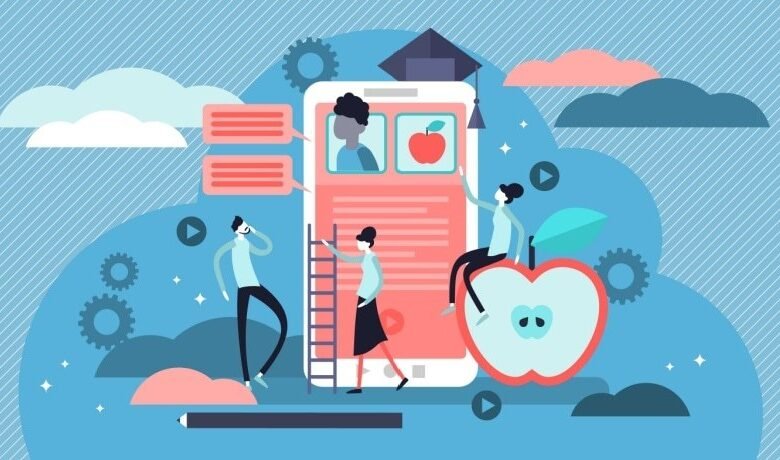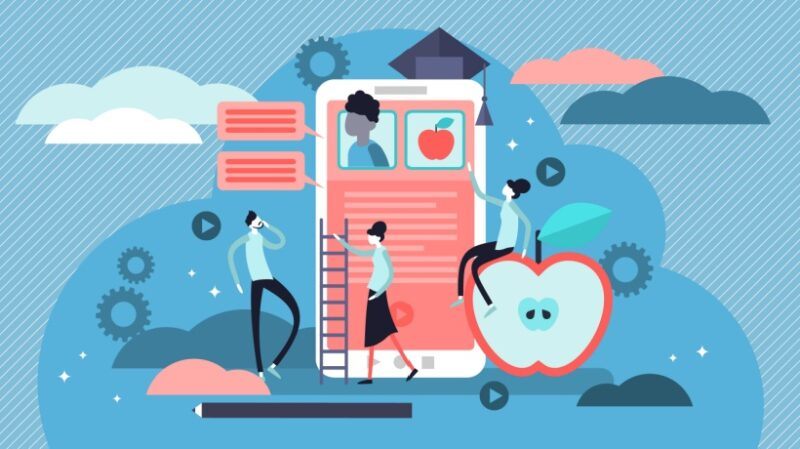Mobile eLearning Apps: Are We Really Learning?


Are eLearning Apps Helping In Real Learning?
Mobile eLearning apps have revolutionized education, making learning more accessible, flexible, and engaging. From language learning apps to coding platforms, students can now acquire skills from anywhere in the world. But beneath the surface, a pressing question remains—are these apps truly helping us learn, or are they just making us better at short-term memorization?
The Rise Of Mobile eLearning Apps And Their Appeal
The explosion of eLearning apps has changed how we approach education. They offer bite-sized lessons, gamified experiences, and instant feedback—all designed to keep users engaged. The appeal is obvious:
- Convenience
Learn anytime, anywhere. - Self-paced learning
Users progress at their own speed. - Gamification
Badges, streaks, and rewards make learning feel like a game. - Artificial Intelligence (AI) in mobile apps
Adaptive learning algorithms adjust content based on performance.
While these features are great, they also raise concerns about whether they encourage real learning or just surface-level retention.
Memorization Vs. Learning: Understanding The Difference
Memorization is about recalling information, while true learning involves understanding concepts, applying knowledge, and thinking critically. Many eLearning apps focus on repetition—flashcards, quizzes, and multiple-choice questions—which reinforce memorization but may not promote deep comprehension.
For instance, in language learning apps, users often memorize vocabulary words but struggle to use them in real conversations. Similarly, coding apps teach syntax and functions but may not provide real-world problem-solving experiences. The key issue is whether these apps are building foundational skills or just reinforcing robotic recall.
The Gamification Trap: Are We Learning Or Just Playing?
Gamification is a popular strategy used in eLearning apps to boost engagement. However, the focus on streaks, leaderboards, and rewards can sometimes shift attention away from real learning. Users may prioritize maintaining a streak rather than truly understanding the material.
- Example
Many users focus on keeping their daily streak alive, often rushing through lessons without absorbing the content. - Problem
When the motivation comes from rewards rather than curiosity or comprehension, learning becomes secondary.
Gamification can be a double-edged sword—while it increases engagement, it can also create a shallow learning experience.
AI In Mobile Apps: Helping Or Hurting Education?
AI-powered features in eLearning apps personalize content, analyze user progress, and suggest improvements. While this technology makes learning adaptive, it also has drawbacks:
- Lack of human interaction
AI-driven feedback can’t replace real conversations or deep discussions. - Overreliance on automation
Users may depend on AI-generated hints instead of developing critical thinking skills. - Standardized learning paths
AI follows patterns, but human learning is often unpredictable and requires flexibility.
AI in mobile apps is a powerful tool, but it should complement—not replace—traditional learning methods.
Short Attention Spans And Superficial Knowledge
One of the biggest criticisms of eLearning apps is their tendency to encourage short attention spans. With most lessons designed to be completed in a few minutes, users rarely spend enough time processing information deeply.
- Example
A history app might break down historical events into short summaries, making them easy to skim but difficult to understand in depth. - Problem
Without critical thinking exercises, reflection, or in-depth discussion, knowledge remains superficial.
The Illusion Of Mastery
Many eLearning apps play with users psychology and bring a sense of progress by awarding points and badges, but these achievements don’t always translate to real-world proficiency [1].
- Example
A coding app may teach users basic syntax, but when asked to build an actual project, learners may struggle. - Problem
Completing multiple-choice quizzes and interactive exercises may create a false sense of mastery.
A 2022 report by Harvard Business Review found that 65% of employees who completed online training felt confident in their skills, but only 30% performed well in real-world applications [2]. This illusion can be dangerous because it makes users believe they are more skilled than they actually are, leading to frustration when they face real challenges.
When eLearning Works: Making The Most Of Mobile Learning
Despite these issues, eLearning apps can be effective when used correctly. Here are some ways to ensure real learning happens:
- Pair apps with real-world practice
- If you’re learning a language, engage in actual conversations instead of just completing app exercises.
- If you’re learning to code, build real projects instead of just solving quizzes.
- Use apps as supplements, not replacements
- eLearning apps should complement traditional learning—not replace it.
- Reading books, engaging in discussions, and taking hands-on courses remain essential.
- Focus on understanding, not just completion
- Instead of rushing through lessons for points, take time to reflect on what you’ve learned.
- Ask yourself: Can I apply this knowledge in a practical situation?
- Be critical of AI-driven suggestions
- AI in mobile apps is useful but not perfect—always challenge its recommendations and look for alternative perspectives.
The Future Of eLearning Apps: Balancing Convenience with Deep Learning
As technology evolves, so will eLearning. Future apps should prioritize:
- More interactive problem-solving activities
Offer these instead of passive memorization. - Blended learning models
Combine AI-driven personalization with human mentorship. - In-depth critical thinking exercises
Encourage application rather than just repetition.
Final Thoughts
Mobile eLearning apps in 2025 will reshape education, but they come with limitations. While they offer accessibility and engagement, they also risk encouraging surface-level learning, short attention spans, and the illusion of mastery. The key is using them wisely—as tools for reinforcement rather than primary sources of education.
Real learning goes beyond gamification, AI-generated lessons, or streaks. It requires curiosity, critical thinking, and practical application—qualities that no app can fully replicate. The future of eLearning lies in balancing technology with deeper, more meaningful learning experiences.
References:
[1] The Psychological Impact Of eLearning: How To Build Confidence In Online Learners [2] 11 Trends that Will Shape Work in 2022 and BeyondSource link




